|
|
|
|
|
Western Digital Raptor 10k-RPM HDD in RAID 0x2 and RAID 0x4 |
|
Join the community - in the OCAU Forums!
|
Test Results with 4 Raptors, Conclusions
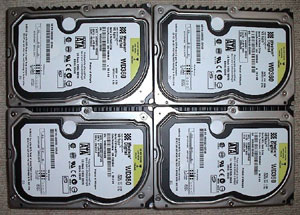
To set up a Raid 0 array with 4 SATA disks is a tricky business. Why is this? Well, an SATA disk can only run alone. It’s not possible to run SATA disks in master and slave configuration, as it is possible with PATA disks. That means that a 2-channel RAID controller such as the ICH5-R or the SiL3112A doesn’t allow more than RAID 0x2. On the other hand: even a 4-channel SATA RAID controller does not make much sense for RAID 0, because the currently available 4 channel SATA controller are all PCI based, and that puts the 130 MB/sec PCI bus limitation in place. 4 SATA disks however are supposed to have a significantly higher average transfer rate than the PCI bus allows. We resorted therefore to Dynamic Disk with Windows XP.
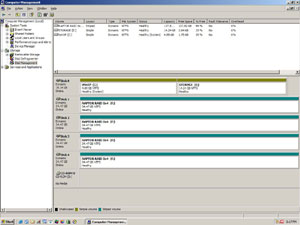
4 Raptors RAID 0x4 in Disk Management
This allowed us to combine the 2 Raptors connected to the ICH5-R and the other 2 Raptors connected to the SiL3122A to a striped (RAID 0) array comprising 4 disks on 4 separate channels. Did it work? Oh yes! It did work very well; at least the transfer rate went up to unprecedented highs.
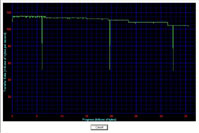 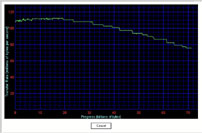 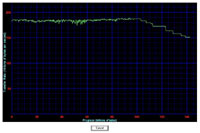
From left to right: 2 Raptors on ICH5, 2 Raptors on SiL3112A, 4 Raptors in Dynamic Disk
We had never seen transfer rates close to 200 MB/sec before with any kind of set up with IDE disks. The RAID 0x4 gain versus RAID 0x2 in Winbench 99, Content Creation and Business Winstone however was much smaller, actually almost non visible, than the huge transfer rate had let us hope. This shows again that transfer rates can be quite misleading as an indicator for real world HDD performance.
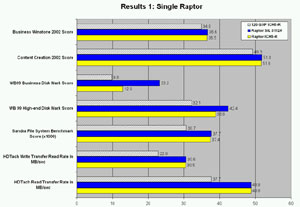
Single Raptor
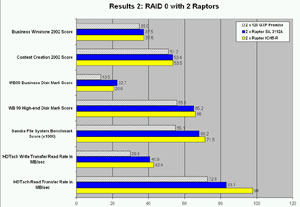
RAID0, 2 Raptors
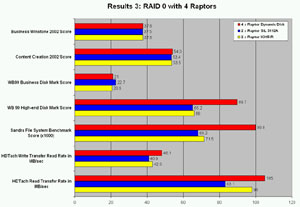
RAID0, 4 Raptors
Although it is fun to see such enormous transfer rates, it does not make sense to go for a 4-disk solution given the big investment in 4 Raptors and the little (if any) gain versus RAID 0x2. Unfortunately we didn’t have four 7,200 rpm disks for a comparison. We refer therefore to results from our previous tests with four Maxtor D740X in RAID 0x4 running from the 4-channel HPT374 Raid controller. Again we can see that the 10,000 rpm Raptor is far ahead.
CONCLUSION:
We can only repeat what we concluded already in part 1 of our Raptor test: The 10,000 rpm Western Digital Raptor is a “must have” for the performance oriented desktop PC enthusiast. The 10,000 rpm Raptor is leaving any 7,200 disk be it SATA or PATA be as single disk or in Raid 0 far behind. We also found that the Raptor is recommendable for a RAID 0 array as the gain versus the single disk was quite substantial. The only shortcoming is obviously the capacity of 36 GB. The ideal set-up is therefore to use a single or 2 RAIDed Raptors for the OS and applications and to have data and files on a slower 7,200 rpm disk with a larger capacity.
|
|
Advertisement:
All original content copyright James Rolfe.
All rights reserved. No reproduction allowed without written permission.
Interested in advertising on OCAU? Contact us for info.
|

|


